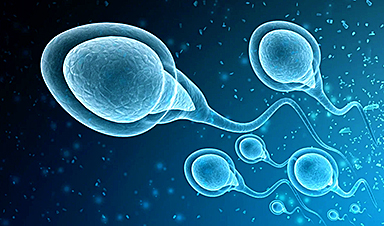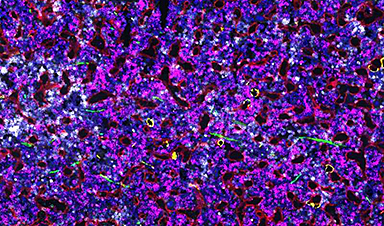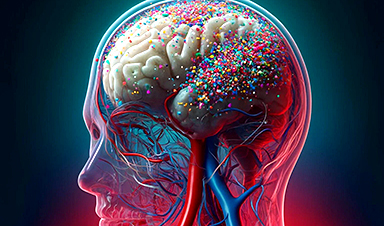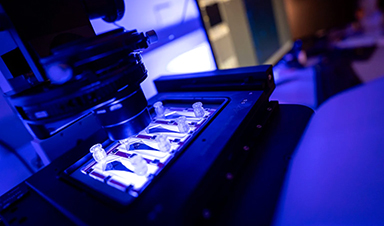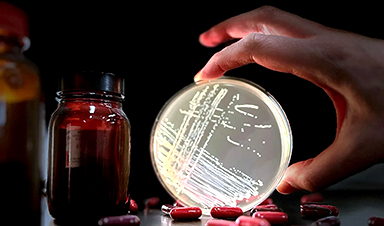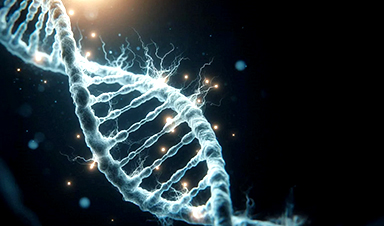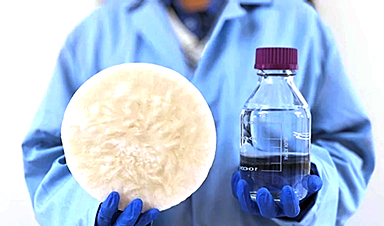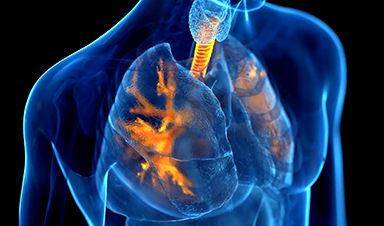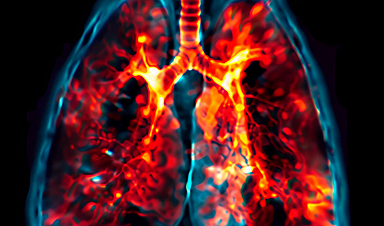In a recent study published in the journal PLOS ONE, researchers conducted a systematic review and meta-analyzed data on the impact of coronavirus disease 2019 (COVID-19) on male reproductive hormones and semen variables to determine whether severe acute respiratory syndrome coronavirus 2 (SARS-CoV-2) infections had an adverse impact on male fertility.
Background
The etiological agent of the COVID-19 pandemic, SARS-CoV-2, is a β-coronavirus that infects human cells by binding to the angiotensin-converting enzyme-2 (ACE-2) receptor. The ACE-2 receptor is found in the lungs, kidneys, heart, and testes, making all these organs possible entry points for the virus.
The COVID-19 pandemic was responsible for over 700 million cases and more than 7 million deaths. However, although the virus is known to primarily infect the respiratory system, research indicates that it can also adversely impact other organ systems. Studies have also found that SARS-CoV-2 infections are more severe in males than in females. Furthermore, studies have found that many males who had been infected with the earlier SARS-CoV-1 had developed orchitis or inflammation of the testes.
However, the data on the impact of SARS-CoV-2 on male reproductive health has been limited. Although some studies have reported associations between COVID-19 and decreased testosterone levels and lower semen quality, some of the findings have been considered methodologically weak.
About the study
The present study aimed to comprehensively review recent studies examining the impact of COVID-19 on male fertility and conducted a meta-analysis by comparing semen quality variables and reproductive hormone levels between infected and uninfected men to understand the influence of SARS-CoV-2 on male fertility.
The researchers used the PECO, or Population, Exposure, Comparator, and Outcomes, model to select studies that examined male patients of reproductive age who had been exposed to SARS-CoV-2. The review included both prospective and retrospective studies as long as they included COVID-19-negative controls or contained pre- and post-COVID-19 pandemic health data for the same individual. Studies that were in vitro, focused on female patients, or lacking control groups were excluded.
For the studies included in the review, the outcomes consisted of measurements of conventional semen parameters such as sperm count, ejaculate volume, sperm concentration, morphology, motility, and viability of the sperm, as well as leukocyte levels in the seminal fluid. The outcomes also included the levels of the male reproductive hormones, including testosterone, estrogen, prolactin, luteinizing hormone (LH), and follicle-stimulating hormone (FSH). The Measurements also included ratios of testosterone to LH and FSH to LH.
For the meta-analysis, the data extracted from the studies consisted of sample sizes, country of study, study design, the methods used to diagnose COVID-19, and key outcomes. The researchers used this data to calculate standardized mean differences, with extensive sensitivity analyses to avoid bias and assess sources of diversity. The parameters were also compared for changes before and after treatment for COVID-19.
Results
The review identified 40 eligible studies published from 12 different countries between 2020 and 2023 that examined the impact of SARS-CoV-2 on male reproductive health. The key findings from the meta-analysis covered the impact of COVID-19 on several aspects of male reproductive health.
The study found that COVID-19 was significantly associated with decreased ejaculate volume, with sensitivity analyses confirming consistent reductions in ejaculate volume after SARS-CoV-2 infections. However, the sensitivity analyses showed that the difference in ejaculate volume before and after COVID-19 treatment was not statistically significant, indicating that the impact of treatment may be limited. The sperm counts also decreased after SARS-CoV-2 infections, although the sensitivity analyses indicated that these reductions were marginal.
Individuals infected with SARS-CoV-2 also showed significantly lower sperm concentrations, and no changes were seen in sperm concentrations after treatment for COVID-19. This finding remained consistent even after accounting for potential study biases and diversity, reinforcing the robustness of the result. COVID-19 was also found to lower sperm viability and motility, with the difference in sperm viability remaining consistent even after the sensitivity analysis.
Comparisons between infected and uninfected individuals revealed no significant differences in sperm morphology. However, comparisons of sperm morphology in the same individual before and after SARS-CoV-2 infections revealed lower levels of morphologically normal sperm. The analysis showed that while the overall morphology differences between infected and uninfected individuals were not significant, the within-individual changes suggest that SARS-CoV-2 may have a subtle but noteworthy effect on sperm morphology.
The reproductive hormone levels were also significantly altered in COVID-19 patients, with elevated prolactin and marginally higher estrogen levels in infected men. Interestingly, the study found substantial variability in testosterone levels before and after treatment, suggesting that COVID-19’s impact on this hormone may be more complex than initially understood. However, the leukocyte levels in the seminal fluid were similar between infected and uninfected men.
Conclusions
To summarize, the study reviewed and conducted a meta-analysis of studies examining the impact of COVID-19 on male reproductive health and found that SARS-CoV-2 had a significant negative impact on male fertility, particularly on parameters such as ejaculate volume, viability, and motility of the sperm, and sperm concentration and count. Although the treatment of COVID-19 partially alleviated some of the affected parameters, the findings suggest that these improvements may not be sufficient to restore pre-infection levels, particularly for parameters like sperm concentration and motility. The study also highlighted the need for further research to fully understand the long-term effects of COVID-19 on male fertility and to explore potential therapeutic interventions.
- V. J., Ashonibare, P. J., Ashonibare, T. M., Akhigbe, & E, A. R. (2024). SARS-CoV-2 impairs male fertility by targeting semen quality and testosterone level: A systematic review and meta-analysis. PLOS ONE, 19(9), e0307396-. DOI:10.1371/journal.pone.0307396, https://journals.plos.org/plosone/article?id=10.1371/journal.pone.0307396
News
Scientists Invent Plastic That Can Dissolve In Seawater In Just A Few Hours
Plastic waste and pollution in the sea have been among the most serious environmental problems for decades, causing immense damage to marine life and ecosystems. However, a breakthrough discovery may offer a game-changing solution. [...]
Muscles from the 3D printer
Swiss researchers have developed a method for printing artificial muscles out of silicone. In the future, these could be used on both humans and robots. Swiss researchers have succeeded in printing artificial muscles out [...]
Beneficial genetic changes observed in regular blood donors
Researchers at the Francis Crick Institute have identified genetic changes in blood stem cells from frequent blood donors that support the production of new, non-cancerous cells. Understanding the differences in the mutations that accumulate [...]
Shocking Amounts of Microplastics in the Brain – It Could Be Increasing Our Risk of Dementia
The brain has higher concentrations of plastic particles compared to other organs, with increased levels found in dementia patients. In a comprehensive commentary published in Brain Medicine, researchers highlight alarming new evidence of microplastic accumulation [...]
Baffling Scientists for Centuries: New Study Unravels Mystery of Static Electricity
ISTA physicists demonstrate that contact electrification depends on the contact history of materials. For centuries, static electricity has intrigued and perplexed scientists. Now, researchers from the Waitukaitis group at the Institute of Science and [...]
Tumor “Stickiness” – Scientists Develop Potential New Way To Predict Cancer’s Spread
UC San Diego researchers have developed a device that predicts breast cancer aggressiveness by measuring tumor cell adhesion. Weakly adherent cells indicate a higher risk of metastasis, especially in early-stage DCIS. This innovation could [...]
Scientists Just Watched Atoms Move for the First Time Using AI
Scientists have developed a groundbreaking AI-driven technique that reveals the hidden movements of nanoparticles, essential in materials science, pharmaceuticals, and electronics. By integrating artificial intelligence with electron microscopy, researchers can now visualize atomic-level changes that were [...]
Scientists Sound Alarm: “Safe” Antibiotic Has Led to an Almost Untreatable Superbug
A recent study reveals that an antibiotic used for liver disease patients may increase their risk of contracting a dangerous superbug. An international team of researchers has discovered that rifaximin, a commonly prescribed antibiotic [...]
Scientists Discover Natural Compound That Stops Cancer Progression
A discovery led by OHSU was made possible by years of study conducted by University of Portland undergraduates. Scientists have discovered a natural compound that can halt a key process involved in the progression [...]
Scientists Just Discovered an RNA That Repairs DNA Damage – And It’s a Game-Changer
Our DNA is constantly under threat — from cell division errors to external factors like sunlight and smoking. Fortunately, cells have intricate repair mechanisms to counteract this damage. Scientists have uncovered a surprising role played by [...]
What Scientists Just Discovered About COVID-19’s Hidden Death Toll
COVID-19 didn’t just claim lives directly—it reshaped mortality patterns worldwide. A major international study found that life expectancy plummeted across most of the 24 analyzed countries, with additional deaths from cardiovascular disease, substance abuse, and mental [...]
Self-Propelled Nanoparticles Improve Immunotherapy for Non-Invasive Bladder Cancer
A study led by Pohang University of Science and Technology (POSTECH) and the Institute for Bioengineering of Catalonia (IBEC) in South Korea details the creation of urea-powered nanomotors that enhance immunotherapy for bladder cancer. The nanomotors [...]
Scientists Develop New System That Produces Drinking Water From Thin Air
UT Austin researchers have developed a biodegradable, biomass-based hydrogel that efficiently extracts drinkable water from the air, offering a scalable, sustainable solution for water access in off-grid communities, emergency relief, and agriculture. Discarded food [...]
AI Unveils Hidden Nanoparticles – A Breakthrough in Early Disease Detection
Deep Nanometry (DNM) is an innovative technique combining high-speed optical detection with AI-driven noise reduction, allowing researchers to find rare nanoparticles like extracellular vesicles (EVs). Since EVs play a role in disease detection, DNM [...]
Inhalable nanoparticles could help treat chronic lung disease
Nanoparticles designed to release antibiotics deep inside the lungs reduced inflammation and improved lung function in mice with symptoms of chronic obstructive pulmonary disease By Grace Wade Delivering medication to the lungs with inhalable nanoparticles [...]
New MRI Study Uncovers Hidden Lung Abnormalities in Children With Long COVID
Long COVID is more than just lingering symptoms—it may have a hidden biological basis that standard medical tests fail to detect. A groundbreaking study using advanced MRI technology has uncovered significant lung abnormalities in [...]
